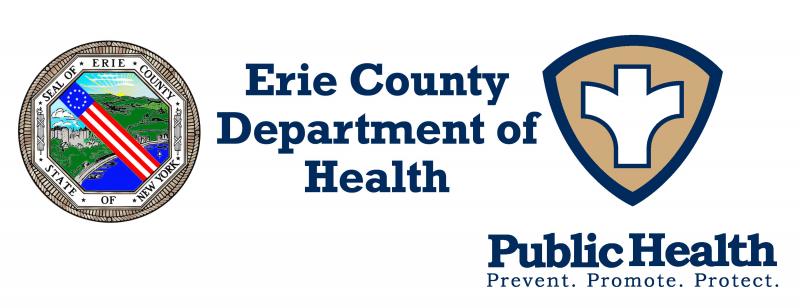Modified: May 24, 2018 1:29pm
Latest News

PRESS RELEASE
From the Office of the Commissioner of Health, Dr. Gale R. Burstein
Date: May 24, 2018
CONTACT: Mary C. St. Mary/Mary.StMary@Erie.Gov
Phone: 716.858.4941/ Mobile: 716.253.3925
Swimming Safety Tips
This is Healthy & Safe Swimming Week
ERIE COUNTY, NY— The week before Memorial Day (May 21–27, 2018) is Healthy and Safe Swimming Week. The goal of this awareness week is to maximize the health benefits of swimming by minimizing the risk of illness and injury. Just 2.5 hours of physical activity every week, including water-based physical activity, can benefit everyone’s health. Each of us plays a role in preventing illnesses and injuries linked to the water in which we swim this summer and year-round.
“The goal of Healthy and Safe Swimming Week is to maximize the health benefits of water-based physical activity while minimizing the risk of recreational water–associated illness and injury,” stated Dr. Gale Burstein, Erie County Commissioner of Health (“ECDOH”). “We all share the water we swim in, and we each need to do our part to keep ourselves, our families, and our friends healthy.”
Recreational water illnesses (“RWIs”) are caused by germs spread by swallowing, breathing in mists or aerosols, or contact with contaminated water in swimming pools, hot tubs, water parks, play areas, fountains, creeks, rivers or lakes. RWIs can also be caused by chemicals in the water or chemicals that evaporate from the water and cause indoor air quality problems. Parents and caregivers of children of all ages need to take the necessary precautions to ensure summer swimming fun remains safe.
Diarrhea is the most common RWI. It is often caused by germs like Crypto (short for Cryptosporidium), Giardia, norovirus, Shigella, and E. coli O157:H7. Other common RWIs include skin, ear, respiratory, eye, neurologic, and wound infections. Children, pregnant women, and people with weakened immune systems are most at risk for RWIs.
Simple and effective steps to take when you swim to protect your health and health of your family:
- Stay out of the water if you have diarrhea.
- Shower before you get in the water.
- Do not substitute the pool for the toilet
- Do not swallow the water
- Every hour—everyone out!
- Take kids on bathroom breaks
- Check diapers, and change them in a bathroom or diaper changing area—not poolside—to keep germs away from the pool
“Every day, about 10 people in the U.S. die from drowning. Two of the 10 are under the age of 15 years. Drowning kills more kids 1–4 years old than anything else except birth defects. Children should always be supervised when they are in or around water. And, no matter how strong of a swimmer you are, do not swim alone,” said Burstein.
Follow these safety steps to help keep everyone safe:
Stay Close, Be Alert and Watch
1. Never leave a child unattended in or near a pool or spa and always watch your children closely around all bodies of water.
2. Designate a Water Watcher to supervise children in the pool or spa. This person should not be reading, texting, using a smart phone or be otherwise distracted. Adults can take turns being a Water Watcher.
3. Teach children basic water safety tips.
4. If a child is missing, look for him or her in the pool or spa first.
5. Keep children away from pool drains, pipes and other openings to avoid entrapments.
6. Ensure any pool and spa you use has drain covers that comply with federal standards (if you do not know, ask your pool service provider whether the covers are in compliance)
7. Learn how to swim and teach your child how to swim.
8. Learn how to perform CPR on children and adults, and update those skills regularly.
9. Install a four-foot or taller fence around the perimeter of the pool and spa and use self-closing and self-latching gates; ask your neighbors to do the same at their pools.
10. Install and use a lockable safety cover on your spa.
11. Have lifesaving equipment such as life rings, floats or a reaching pole available and easily accessible.
These few extra safety steps will help minimize risk of illness while maximizing the health benefits and swimming enjoyment. Healthy swimming is not just about the steps pool operators and pool inspectors take. We need to all do our part to help keep ourselves, our families, and our friends healthy this summer and year round.
# # #
For More Information:
ECDOH Swimming and Recreational Water Safety
PoolSafety.gov
Centers for Disease Control and Protection (“CDC”) – Healthy and Safe Swimming Week

